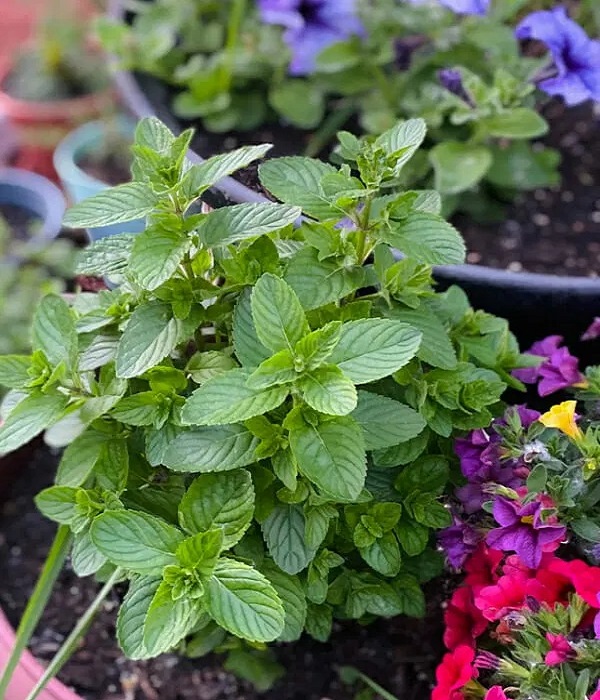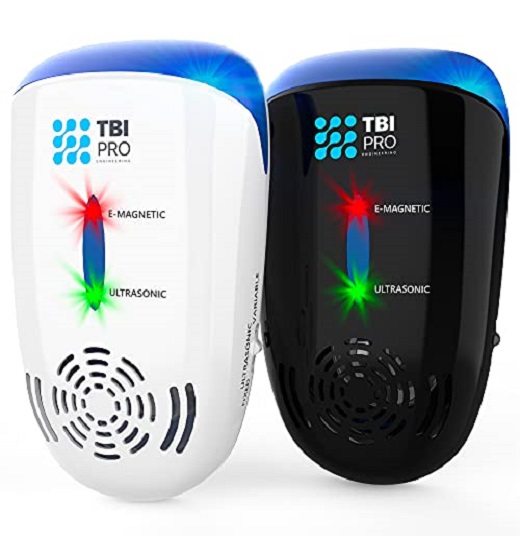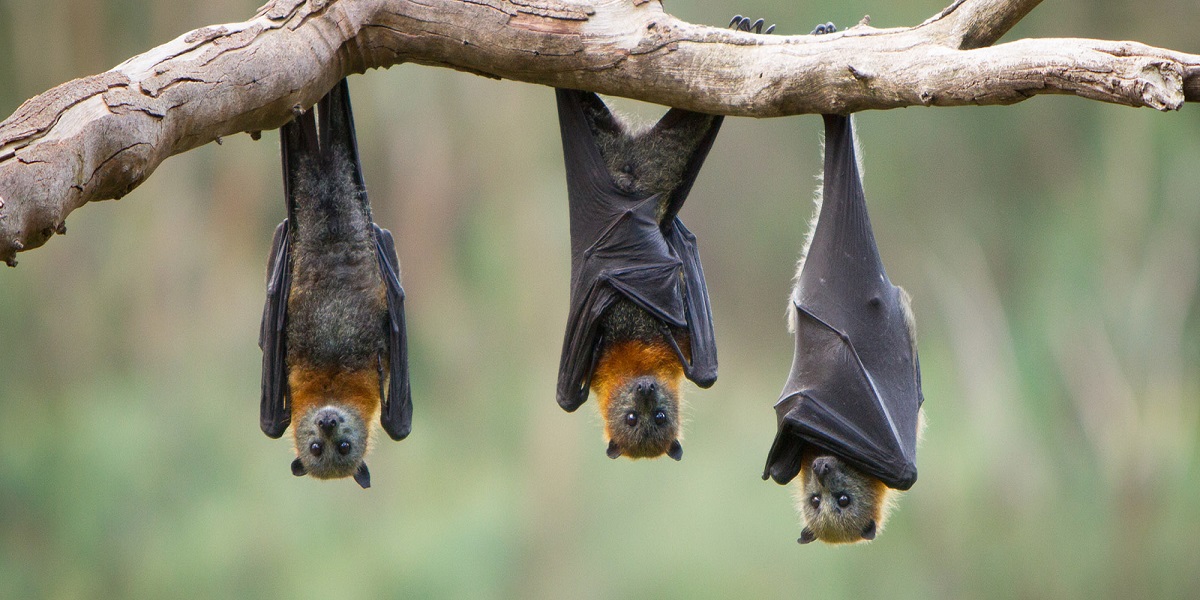Although bats are typically quite harmless, you probably still wouldn’t want to have them as housemates. Bats should not be allowed inside of your house for any reason, as they can be noisy, destroy your insulation, and even spread fatal diseases.
If you’ve seen one bat in your house, chances are good that there are more lurking around. If you want to get rid of bats, you need to find where they are roosting, and they often choose insulation in attics or walls.
Similar to getting rid of raccoons, it’s crucial to remove these mammals gently. Fortunately, there are a few different natural humane ways to attempt this.
Rachel Crow, Garden Editor for Homes & Gardens, says bats are protected in many states and countries, including the UK. Thus, it is extremely important to check your local regulations about bat removal or disruption before doing anything to avoid legal trouble or damaging the bats.
BLOCK ALL ENTRANCES
In order to prevent bats from returning, it is important to seal off any entry points they might use, such as cracks or holes in the building, and especially the roof.
Our attic spaces mimic the cavernous conditions of bats’ natural habitats, with the added benefit that our roofs are usually insulated, providing the bats with comfort as well as shelter,’ Rachel says. The elimination of potential access sites not only helps to keep bats out of your home, but may also prove useful in eliminating them.
‘You may humanely filter bats out of your home by covering all possible openings and installing a bat cone, a little device that permits bats to squeeze out but not back in.’ While it may take some time, it does not disturb the bats on purpose, making it legal in many states and countries throughout the world.’
However, this technique works well with smaller bat groups rather than massive bat colonies.

MAKE USE OF NATURAL REPELLENTS
Due to their keen sense of smell, bats can be easily repelled from a property with the help of all-natural deterrents. Scents such as peppermint (which is also effective against mice), phenol (an aromatic chemical commonly found in cleaning products), cinnamon, or eucalyptus can all be used in large numbers to drive bats out or dissuade them from accessing bat nesting locations.
You can apply phenol crystals to the affected area, but make sure to use the proper safety equipment to avoid skin irritation. Phenol sprays are available; however they may not last as long and will need to be reapplied frequently.
Use two cups of warm water and half a cup of sugar together with a few drops of peppermint or eucalyptus essential oil. Apply liberal amounts of this spray to the bats’ nesting spot on a regular basis to drive them away.
In the case of newly arrived bats, odors are an effective deterrent, but for established colonies, a combination of deterrents may be necessary.

MAKE A BAT HOUSE TO YOUR YARD
Bat homes are an excellent complement to other bat deterrents since they give bats a place to hide while they are in your yard. You can prevent bats from repeatedly trying to re-enter your home by giving them a safe place to roost in your garden. Bats are excellent at controlling pests, making them a welcome addition to any garden that relies on plants for sustenance.
Once a colony of bats has settled in one area, it will likely stay there for as long as possible, if the environment is suitable. Because their native habitats have been destroyed but our buildings have not, bats frequently invade human dwellings. When performing any type of pest management, it is critical to ensure that the animals can survive after they have left your home.

ELIMINATE THE MAIN FOOD SOURCE FOR THE BATS
Bats can be discouraged from staying in your yard by eliminating potential food sources, much like moles can be. In fact, if bats continue to hang around your house, it may be a sign of a pest problem.
Determine the species of bat that has taken up residence in your attic. Different species of bats specialize in eating either fruit or insects, or both.
The common bat, one of the most abundant bats in North America, may consume 600 or more mosquitoes in one hour. Bats often become an issue when there is an infestation of beetles, moths, or mosquitoes because these insects serve as a food source for bats. Natural remedies, such as mosquito-repellent plants, are preferable, but if an insecticide must be used, choose one that won’t damage garden-dwelling creatures.
Rachel recommends putting up netting to protect fruit from pests if you have fruit trees in your yard.

INSTALL BRIGHT GARDEN LIGHTS
Lights in the yard and on the porch can do more than just look nice; they can also help keep pesky insects at bay. As nocturnal creatures, bats can’t stand being exposed to strong light during the day. Bats can be discouraged from entering your yard in the first place by using bright outside lighting, and bats can be driven out of dark spaces like an attic by installing motion-sensitive lighting.

INSTALL A SOUND MACHINE
If nothing else has been successful, you can try using a device that emits ultrasonic sound to chase away the bats. Bats, like squirrels, are driven away from their roosts by loud noises.
Ultrasonic sound waves interfere with bat hearing. Due to their weak vision, these little mammals rely on echolocation to find their way around.
This should be a last resort because it might be unpleasant for the bats; once they’ve fled and you’ve sealed off their entry points, turn it off.

CLEAN THE AREA IN WHICH THE BATS HAVE BEEN
Bats, like many other animals, use scent as a way to identify their territory and return to the same place night after night. After eradicating a bat colony, it’s important to replace damaged insulation and give the area a thorough cleaning to remove bat guano.
Bats are discouraged from returning to an area after it has been cleaned with chemical cleansers containing phenol and other strong-smelling substances.

CONTACT AN EXPERT
When dealing with bats, it’s preferable to hire an exterminator. Sometimes, home treatments aren’t enough to get a bat colony to relocate, especially if it’s been there for a while.
Some pest control companies may not be able to help you get rid of bats because of local laws, but they may know of other methods to get them to go of their own accord.
DO MOTHBALLS GET RID OF BATS?
Although mothballs are an efficient means of warding off clothes moths, the chemical they produce is unpleasant and often causes serious bodily damage in tiny mammals; as a result, you shouldn’t use them to get rid of bats.
To relocate bats in a way that is kind to them, care must be taken to not make them ill or injured in the process. Mothballs act by producing particles that cause vomiting, dizziness, and nausea in bats, and can even be dangerous in large quantities.
Furthermore, once the mothballs have decomposed, the bats will likely return, making them no more effective than other, less harsh methods of removing bats from a home.
DO BATS LEAVE ON THEIR OWN?
Even though smaller bat colonies may relocate on their own, larger colonies will likely remain in the location until you actively discourage them by making it undesirable to them.
In urban settings, where natural habitats are frequently destroyed, bats rely on human dwellings for warmth, shelter, and often food. For this reason, bats are not likely to disappear on their own.
WHAT DRIVES BATS TO YOUR HOME?
Bats, like other pests, are drawn to your home because of the comfort and safety it provides. As a result of the advantages of human settlements (i.e., protection from the elements and durability), these creatures are typically willing to share living quarters with humans.
As human populations rise, bats learn to coexist with us, and they are less likely to be frightened away when we get near their homes.

